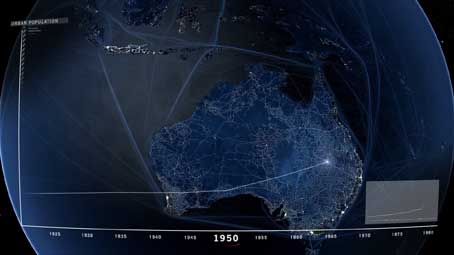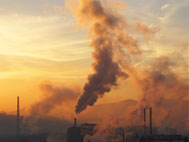| SEARCH |
-

Nov 17, 2015
Reflections on a three-decade legacy
The International Geosphere-Biosphere Programme (IGBP) will come to a close at t...
-
Nov 17, 2015
Use of and access to content on this website
Text and images produced by IGBP in house are free to use with appropriate credi...
-
Nov 12, 2015
Bella Gaia performance and panel discussion to mark IGBP's closure
A musical performance by Bella Gaia will celebrate the achievements and legacy o...
-

Towards Future Earth:
evolution or revolution?
During its three decades of existence, the International Geosphere-Biosphere Pro...
-
A personal note on IGBP and the social sciences
Humans are an integral component of the Earth system as conceptualised by IGBP. João Morais recalls key milestones in IGBP’s engagement with the social sciences and offers some words of advice for Future Earth.
-
IGBP and Earth observation:
a co-evolution
The iconic images of Earth beamed back by the earliest spacecraft helped to galvanise interest in our planet’s environment. The subsequent evolution and development of satellites for Earth observation has been intricately linked with that of IGBP and other global-change research programmes, write Jack Kaye and Cat Downy .
-
Deltas at risk
Around 500 million people worldwide live on deltas, but many of the world's deltas are sinking due ...
-
Climate change: the state of the science
A new data visualization released on the first day of the plenary negotiations at the UNFCCC’s clima...
-
Climate Change:
the State of the Science
Videos now online from the Stockholm public forum to mark the launch of the IPCC's climate report, 2...

Great Acceleration
The second half of the 20th Century is unique in the history of human existence. Many human activites reached take-off points sometime in the 20th Century and sharply accelerated towards the end of the century.
The last 60 years have without doubt seen the most profound transformation of the human relationship with the natural world in the history of humankind.
Links
Press release January 2015
Downloads
Great Acceleration Data (excel 2007, 364.7 kB)
(excel 2007, 364.7 kB)
Great Acceleration Powerpoint (powerpoint, 21.1 MB)
(powerpoint, 21.1 MB)
Books
Global Change and the Earth System (Steffen et al, 2004) (pdf, 4.2 MB)
(pdf, 4.2 MB)
Articles
Planetary Boundaries
The effects of the accelerating human changes are now clearly discernible at the Earth system level. Many key indicators of the functioning of the Earth system are now showing responses that are, at least in part, driven by the changing human imprint on the planet. The human imprint influences all components of the global environment - oceans, coastal zone, atmosphere, and land.
Dramatic though these human-driven impacts appear to be, their rates and magnitudes must be compared to the natural patterns of variability in the Earth system to begin to understand their significance.
The increase in atmospheric carbon dioxide concentration provides a useful measure with which to evaluate the rate and magnitude of human-driven change compared to natural variability. The human imprint on carbon dioxide is unmistakable. In December 2014, atmospheric carbon dioxide concentration stood at 399 parts per million by volume (ppmV), over 100 ppmV above the previous maximum level of around 280 ppmV recorded in the Vostok ice core.
Within the current limits of resolution of the ice-core records, the present concentration has been reached at a rate at least 10 and possibly 100 times faster than carbon dioxide increases at any other time during the previous 420 000 years. Thus, in this case human-driven changes are well outside the range of natural variability exhibited by the Earth system for the last half-million years at least.
Over just the past few hundred years, human activities have clearly evolved from insignificance in terms of Earth system functioning to the creation of global-scale impacts that:
• are approaching or exceeding in magnitude some of the great forces of nature
• operate on much faster time scales than rates of natural variability, often by an order of magnitude or more
• taken together in terms of extent, magnitude, rate and simultaneity, have produced a no-analogue state in the dynamics and functioning of the Earth system.
Download images
Download data (excel 2007, 364.7 kB)
(excel 2007, 364.7 kB)
Download powerpoint (powerpoint, 21.1 MB)
(powerpoint, 21.1 MB)
The domino effect
Human impacts on the Earth system do not operate in separate, simple cause-effect responses. A single type of human-driven change triggers a large number of responses in the Earth system, which themselves cascade through the system, often merging with patterns of natural variability.
The responses seldom follow linear chains, but more often interact with each other, sometimes damping the effects of the original human forcing and at other times amplifying them. Responses become feedbacks, which in turn can lead to further forcings that can alter the functioning of the Earth system.
The nature of the Earth system’s responses to the increasing anthropogenic forcing is more complex than simple cause-effect relationships, such as greenhouse gas emissions causing global warming.
Fossil-fuel combustion produces a range of gases that have a large number of cascading effects. For example, carbon dioxide not only affects climate but directly affects how vegetation grows. It changes the carbonate chemistry in the ocean – the oceans are becoming more acidic, which in turn affects marine organisms. Changing carbonate chemistry is a factor in the widespread decline of coral reefs around the world.
Fossil-fuel combustion also produces oxidising gases such as nitric oxide and sulphur dioxide that have well-known effects such as acidification and eutrophication of ecosystems.
However, these gases can eventually contribute to changes in fundamental Earth system functioning because of their indirect effects on the radiative properties of the atmosphere, and hence climate. The mechanisms are through reactions with other gases plus their impacts on the ability of the atmosphere to cleanse itself through oxidation and other processes.
Aerosols produced by fossil-fuel combustion can fertilise or reduce plant growth, depending on the circumstances, and directly affect human health. They also lead to large-scale direct or indirect modifications of climate.
We can trace even more subtle effects back to fossil-fuel combustion. Increasing carbon dioxide levels affect the stomatal opening of terrestrial vegetation, reducing water vapour loss through the stomates. This results in higher water-use efficiency. This effect is especially pronounced in semi-arid vegetation, and can lead to increased productivity through enhanced soil moisture.
More generally, no two species react in an identical way to elevated atmospheric carbon dioxide concentration. This leads to changes in the competitive abilities of plants and hence to changes in species abundances and community composition. Fossil-fuel combustion cascades through the Earth system to become even a biodiversity issue.
Like fossil-fuel combustion, land-cover and land-use change also trigger widespread cascading effects at local, regional and global scales. We can show a few ways local effects of land-use change cascade through regional to global scales.
Multiple, interacting stresses
Global change does not operate in isolation but rather interacts with an almost bewildering array of natural variability modes and also with other human-driven effects at many scales. Especially important are those cases where interacting stresses cause a threshold to be crossed and a rapid change in state or functioning to occur.
Adapted from Steffen et al, Global Change and the Earth System, 2004 (pdf, 4.2 MB)
(pdf, 4.2 MB)
Great Acceleration 2015 - Press release 15 January 2015
Great Acceleration 2015 - Data (excel 2007, 364.7 kB)
(excel 2007, 364.7 kB)
IGBP closed at the end of 2015. This website is no longer updated.
-

Global Change Magazine No. 84
This final issue of the magazine takes stock of IGBP’s scientific and institutional accomplishments as well as its contributions to policy and capacity building. It features interviews of several past...
-

Global Change Magazine No. 83
This issue features a special section on carbon. You can read about peak greenhouse-gas emissions in China, the mitigation of black carbon emissions and the effect of the 2010-2011 La Niña event on gl...
-
INTERGOVERNMENTAL PANEL ON CLIMATE CHANGE:
How green is my future?
UN panel foresees big growth in renewable energy, but policies will dictate just how big.
-
UK:
'The Anthropocene: a new epoch of geological time?'
Royal Society, Philosphical Transactions A





















